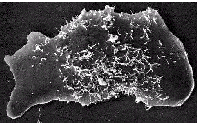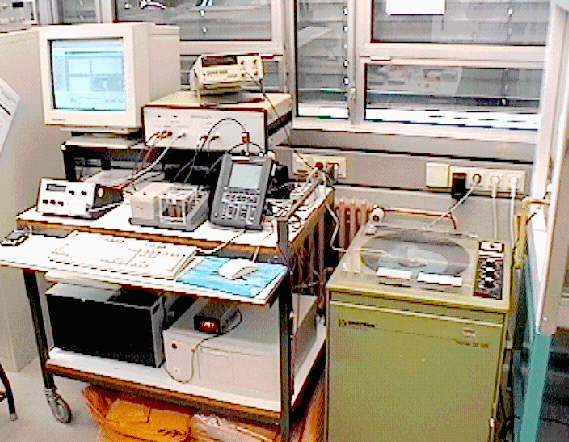Prof. a.D. Dr. Eberhard Neumann (Prof. h.c. Drs. h.c.)
Secretary:Phone: +49 521-1062053, fax: +49 521-1062981
University of Bielefeld, Faculty of Chemistry, Physical Chemistry III (Bio-PC)
P.O. box: 10 01 31, D - 33501 Bielefeld
Email: eberhard.neumann@uni-bielefeld.de
Research:
Physical chemistry of biological electricity and biotechnological applications of electrical field pulses for cell manipulations, especially in clinical tumor and gene therapies.
| From basic research of physical chemistry to laboratory-technical application in cell biology and biotechnology. (1) Single cells (left) of the microorganism Dictyostelium discoideum (Schleimpilz), which was electrofused to viable, still chemotactically active large cells (2). Electroporation apparatus (3); Dialog-Electroporator (1984) |
Biological Electricity
"Life is bioelectricity", Aharon Katchalsky (1914-1972), biophysicist and humanist.
- The membranes of biological cells are without exception carriers of electrical potential differences: typically 100 mV, equivalent to a field strength of 100 kV/cm at an average membrane thickness of 10 nm.
- A number of vital processes such as nerve excitation, synaptic neurotransmitter secretion, muscle contraction or photosynthesis are directly coupled to membrane structures. The underlying molecular processes are chemically and electrically controlled.
- The investigation of the throughout very fast electro-chemical elementary processes has necessiated to develop new conductometric and electrooptical methods and equipment. These methods give access to the fast kinetics of ion transport through membranes and structural changes in macromolecules and lipid/protein-membranes as well as electromechanical deformations of cells and vesicles in the time interval of nanoseconds to seconds in high electrical fields (100kV/cm).
- A very successful technical application of high field pulses is the reversible electromechanical permeabilisation of cell membranes. In cell biology and genetic engineering the new technique of Membrane Electroporation developed by us, enables the transfer of active substances (drugs) and foreign genes (DNA) into cells (electrotransfection). Recently membrane electroporation is used world-wide to transfer highly diluted chemotherapeutic drugs into skin tumors: First successful clinical applications of the technique of electroporative gene and drug delivery are documented.
Biography in the Faculty Booklet 2005:
|
To read the pdf-list get free Acrobat Reader: 
|
|
Last update: Sergej Kakorin, 22.08.2006





![]()